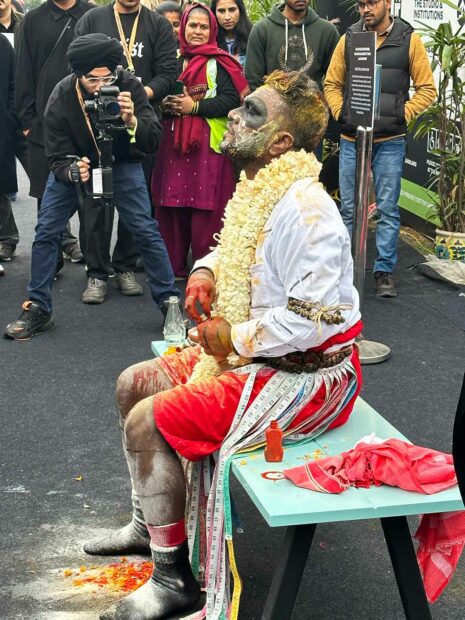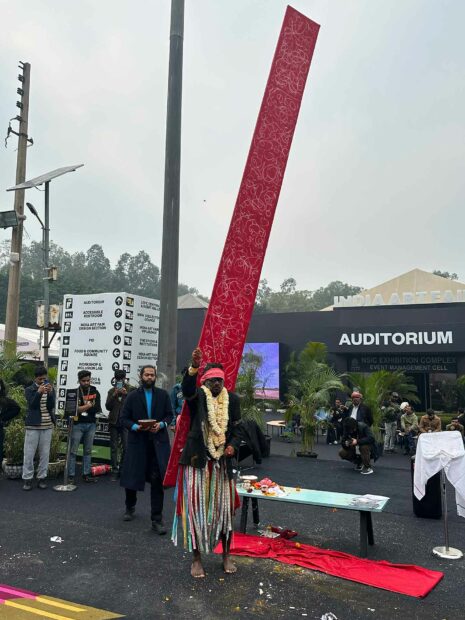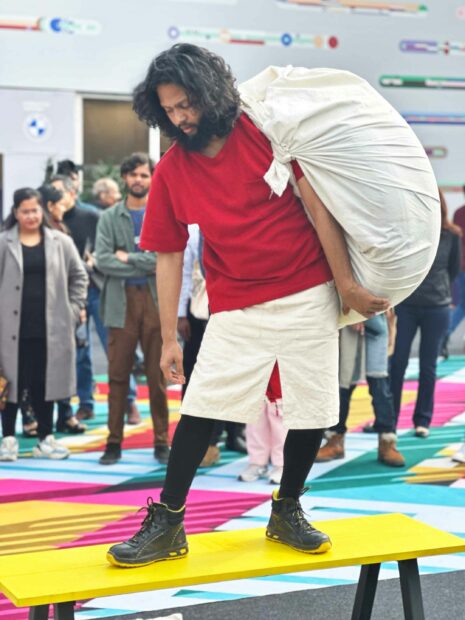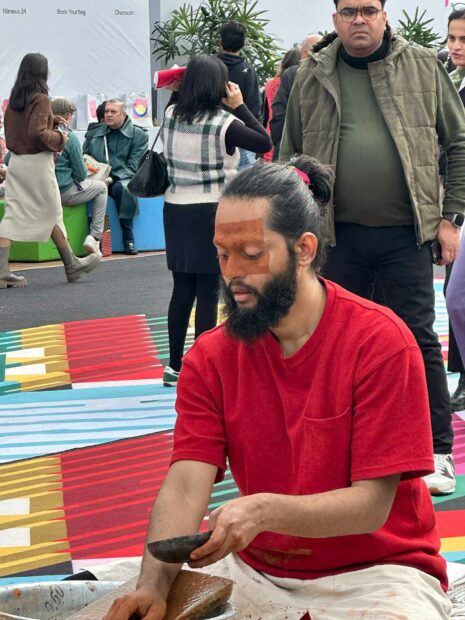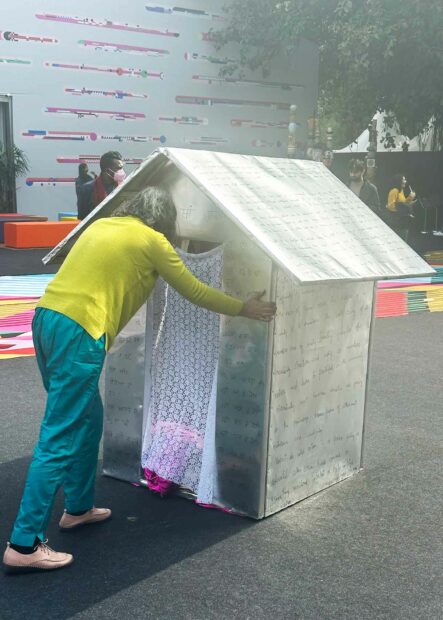Author’s Note: This is the fifth in a series of articles that recounts my experiences as a Fulbright Scholar in India.
I’ll admit I dislike art fairs. I try to avoid them when I can. I hate large crowds and find it difficult to focus on the art. As part of my Fulbright Research on contemporary female Indian artists, however, I felt compelled to attend the largest art fair in India. In some ways, it was similar to my other art fair encounters: after a few hours, I experienced sensory overload and anxiety from the large number of people. The atmosphere spoke to the emphasis on being seen — the bolder and louder, the better. One curator told me that he comes to the fair not to see the art, but to talk to people.
Despite my low expectations, I was pleasantly surprised to see that there were daily programs of performance art and some multimedia installations in addition to the traditional gallery booth system. There was also a well-curated program of artist talks and panel discussions. I found myself drawn to works that were not easily salable. I came each day to witness the performance art events and tried to stay for the three-hour duration of the program, not only to support the performers, but also as my own small act of resistance to counter the brisk walk-by pace of other attendees.
Kerala-born performance artists Sajan Mani and Jyothidas KV organized the performance program. Prior to arriving in Delhi, I taught a week-long performance art workshop for the MFA photography students at the National Institute of Design, and we looked at Mani’s work exploring caste oppression. Witnessing it in person (Mani both put together the program and was featured in it) was a powerful experience. He uses his body, a black Dalit body, to deconstruct and challenge histories of violence and discrimination against lower caste people. (Dalit is the lowest level of the caste system; Dalits were formerly known as the untouchables.)
Inspired by traditional dances of lower caste communities, Mani’s performance, Ancestral Dancing Veins, was emotionally charged and physically demanding. I don’t pretend to understand the many cultural references in the work, but it was a profound and sacred experience.
At times, Mani (who was invoking the demigod Gulikan) seemed possessed or in a trance-like state. At other points, he appeared to have superhuman strength. There were many ritual aspects, including rubbing his face, hands, and hair with turmeric, rice, flour, and red pigment, and engaging with rhythmic, repetitive writing in Malayam text. Perhaps this was a re-writing of ancient texts. For me, it symbolized a reclamation of power. At the end, he blessed everyone in the audience with a small gift of rice and flower petals, which I proudly keep in my journal.
Exercises in Belonging: Laterite Moorings, a potent performance by Delhi-based artist Jyothidas KV, explored issues of labor and the human connection to the Earth (specifically the Western Ghats). Like Mani’s work, Jyothidas KV’s piece included layered rituals and physical challenges. At the beginning of the performance, the artist stood on a scaffolding holding a large potli (cloth bundle) containing a truck tire. I interpreted this as the physical toil and struggles of laborers which go largely unnoticed. At times, the artist put down the bundle and used it as a place of rest, allowing the weight to be literally and figuratively released from his shoulders.
Later in the performance, Jyothidas KV smashed laterite stone on a stone tablet, and added water to create pigment which was used as a drawing material and also to paint his face. The repetitive process showed humanity’s reliance and connection to the Earth for life and sustenance. At the end, the artist gifted the audience with cashew nuts, which are grown in the Western Ghats. In thinking about the work’s title, moorings refer to grounding and rootedness. When we lose connection with the land, we lose our stability. I also thought about ritual as a strategy to connect with our cultural legacy, and to forge new legacies — ones that are inclusive and sustainable.
Delhi artist Manmeet Devgun’s compelling performance Thaan: Searching the Self questioned the notion of home and what constitutes a home. For many women in India, home is inextricably tied to the patriarchal structure. Traditionally, women live in their father’s home until they are married, and then move to their husband’s parents’ home, so the notion of one’s own home is foreign. In this work, Devgun built a portable home in which she performed. The structure looks like a house, but is too small for comfort or security.
Through her actions, she moves the dwelling around, never staying in one place for long. The work was inspired by a poem she wrote in Punjabi (her mother tongue), in which she asks, “Is there such a place where women are not ridiculed, or abandoned, or disowned? Is there a place where we are treated with love, respect, and dignity? These questions are quite relevant in today’s time.” This was her first performance after a three-year hiatus. I had the pleasure of interviewing her, and asked her what performance gave her that no other art form did, and she responded: “FREEDOM.”
The India Art Fair took place from February 1-4, 2024 in Delhi, India


